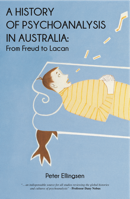Writers read to write. It is words in before words out. Without the reading and the waiting that goes with it, nothing useful emerges. Who knows where the inspiration comes from: it arrives unexpectedly on tracks laid down – not by a wish to do good – but an urge to address a nagging question; what Freud who was recognised as a writer with 1930’s Goethe Prize, called the “overpowering need to understand the riddles of the world”. The riddles, of course, are all internal, and get worked on in ways that usually surprise writers. It is better if there is not too much conscious interference. As E.M. Forster said of his 1924 novel, A Passage to India, it is a process of throwing a bucket down into the unconscious to see what comes up. Leonardo da Vinci expressed something similar when he insisted on laying down his brushes for long stretches during the painting of The Last Supper; a detour that was beyond the comprehension of observers, who hounded him until the artist asked his patron to intervene.
This unconscious input into art has marked all the greats, from Shakespeare to Salinger, though the artists themselves often can’t explain the process, or their part in it. US writer Joseph Heller once told me that the first page of his cult novel, Catch 22, came from a dream, but he could not explain why. How formations of the unconscious – dreams, jokes, slips of the tongue, symptoms – ferment art, is a captivating question; one that takes us into the biography of the artist, and the link art has with disciplines which seek to understand the soul. Freud, for instance, famously described the role of infant daydreaming in the creation of literature, pointing out that children, unlike adults, are not ashamed of their dreams and fantasies and employ them to fashion characters and plots, a pleasurable practice that can be revived in later life. He also studied the lives of creators, such as Leonardo da Vinci, and creations, such as Shakespeare’s Hamlet, to find where the creative spark came from, and what accounted for it. Freud’s French interpreter, Jacques Lacan, went even further, looking into the motivation of Hamlet, and contemporary writers of genius, in particular 1947 Nobel prize-winning novelist Andre Gide, whose search for self dazzled readers without ever satisfactorily explaining the man behind the pen.
Social crusader, spokesman for homosexual rights, Gide’s used his writing to examine ethical issues with a relentless critical spirit, but left crucial questions about his own life unanswered. Others have tried to fill in the gaps, including, most recently, Australian writer, Robert Dessaix, whose Arabesques: A Tale of Double Lives draws on the compelling facts of Gide’s life to fashion fiction. The facts are that Gide, who published his first novel at 22, had a troubled sexual background, arising from his aunt trying to seduce him when he was a child. At 13 he saw her and her lover locked in an embrace. It was an event that was much magnified for Gide by the trauma it produced in his cousin, Madeline. Seeing Madeline in tears the adolescent Gide understood for the first time “the secret of her usual sadness.” He decided his mission in life was to rescue her and write. In 1895, the couple married, and seven years later, The Immoralist, a novel that examines the destructive force of hedonism and hunger for new experiences, appeared. Gide’s writing flourished and he stayed married to Madeline but he never consummated their union. Instead he went to North Africa with Oscar Wilde and fled to London with his 15 year old lover. Madeline’s response was to burn all his correspondence – “the best part” of himself. Gide wrote about this, as did those around him but without unveiling the motivation of someone so obsessed with obtaining freedom in the face of moral and puritanical constraints. His question – how to be yourself while not betraying your values – is a contemporary and clinical one. But despite Gide’s interest in psychoanalysis – “Freud, Freudianism … for the last 10 years, or 15, I have been indulging in it without knowing” – the answer stayed elusive.
To unravel the puzzle, Lacan drew on the work of Gide’s biographer, French psychiatrist, Jean Delay, whose two volume account, The Youth of Andre Gide, is a modern classic. By reading Delay as closely as he had read Freud, Lacan saw in the sexual trauma suffered by Gide more than Gide himself did. Lacan, who places great emphasis on the role and place of the father, was interested that Gide’s father had died when his son was 11, leaving the boy open, Lacan argues, to bewilderment about the place he occupied in his mother’s desire. It was this that allowed Madeline to become the object of his love, not his desire. He was trapped in narcissistic identification. The young boys Gide pursued represented Gide himself as a young boy, a boy desired by his aunt. He knew the violence of desire. He was both seducer and the one being seduced. For Lacan, Gide illustrates what happens when the paternal metaphor is not well defined. Interestingly, Gide, who could himself endure just six psychoanalytic sessions, both admired and hated Freud, calling him that “imbecile genius.”
And what of the place of reading: Gide recalled that his father spent most of the day in his study, where, when allowed, Gide was read Molière and the Odyssey. For Gide: “the reading certainly made the deepest impression on me, not only because of the solemnity of the story, but because of the gravity of my father’s voice and my mother’s expression, as she sat with her eyes closed, in order alternately to signify or to shield her pious absorption, and opened them only to cast a questioning glance on me, full of love and hope.”

